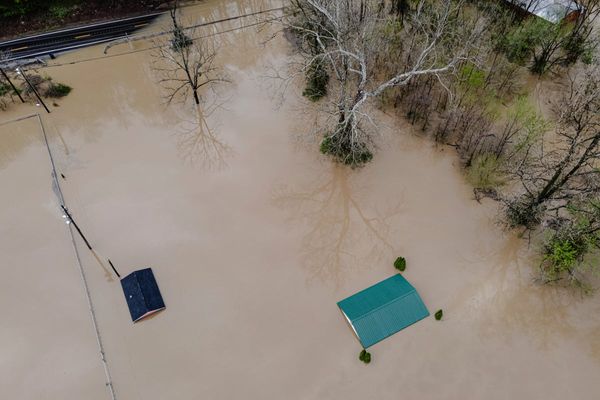The story so far: In February this year, a woman devotee complained that she was not permitted to offer worship to the deity from the Kanakasabhai Mandapam in the temple. The police registered a complaint against 20 Dikshithars under the Scheduled Castes and Scheduled Tribes (Prevention of Atrocities) Act. The Department of HR&CE had also received a number of complaints of maladministration/malpractices and misappropriation from devotees since the Sri Sabhanayakar Temple is considered a public temple managed by the Dikshithars, who are a denomination community. Following this, the Commissioner, HR&CE, issued notice informing them of the complaints the Department had received. The war of words has continued over the last two months. On June 7 and 8, a committee constituted by the Commissioner with powers drawn under Sections 23 and 33 of the HR &CE Act, 1959, visited the temple for inspecting records. However, they could not carry out their duties because of the objections from the Podhu Dikshitars.
What was the issue with permitting devotees at the Kanakasabhai?
The Dikshitars had not permitted devotees to climb atop the platform, citing restrictions due to the pandemic. One of the Dikshithars, Ganesa Dikshithar, had violated the order of the Podhu Dikshithar committee by climbing atop the platform and offering worship along with his wife. Heated exchanges ensued, and the man was reportedly manhandled by a section of Dikshithars, following which he filed a complaint. A Podhu Dikshithar, speaking on condition of anonymity, said they had decided against permitting devotees to climb atop the Kanagasabhai because it would obstruct the view of devotees standing below. However, following complaints, the HR&CE Commissioner sought a report from the Revenue Department and suggested to the State government that devotees be permitted to have darshan from the Kanagasabhai since the pandemic restrictions had been relaxed.
What did the notice to the Podhu Dikshithars say?
The Department of HR&CE, in its notice, asked them to keep ready documents pertaining to properties and income and expenditure for inspection on June 7 and 8. In a communication, C. Jothi, Joint Commissioner, Cuddalore, who is also the coordinator of the committee constituted by the Commissioner, HR&CE, said the Podhu Dikshithars should cooperate with the committee that planned to inspect the records. The details sought include income/expenditure records up to January 1, 2014 and audit reports for the same period; details of repairs carried out and ASI clearance obtained; details of endowments, the properties bequeathed for the same, the income obtained from them and the status of the properties; details of offerings, jewellery and other precious items owned by the deities; and details of properties and their lessees. Among the jewellery in the custody of the Dikshithars is supposed to be a ‘haaram’ with blue stones apparently presented by Kulothunga Chola.
What do the Dikshithars say?
A Podhu Dikshithar, speaking on condition of anonymity, said the affairs of the temple were managed as per rules and tenets that have been in existence for hundreds of years. All the events were being conducted as per rules and on no account would the Podhu Dikshithars compromise on them. The Dikshitars said the Department of HR&CE had no jurisdiction of administration in the temple. The issue whether Podhu Dikshithars constitute a religious denomination had attained finality and would operate as ‘Res Judicata’ in all future cases, the committee said in its reply to the notice. The Podhu Dikshithar committee refused to share details of expenditure to the visiting committee, taking the stand that the Department had no power to call for records from the temple.
Is the tussle between the Podhu Dikshithars and the Department of HR&CE a recent one?
It was in 1886 that the then British government sought to audit the income of the temple. But the Dikshithars refused to comply and the issue went up to the Presidency Court in Madras. The battle for control of the temple has been a long-drawn one and several cases later in 2014, the Supreme Court quashed the appointment of an executive officer to the temple in the absence of the necessary rules, which were drawn up in 2015. The Department has details of audit reports from 1880 to 2014. In 1987, Chief Minister M.G. Ramachandran appointed an executive officer for the temple. An executive officer appointed for the period from 2009 to 2014 ensured that fixed deposits to the tune of ₹3.75 crore were made using income.
Where is this issue headed towards?
The Dikshithars claim that the temple is a denomination temple, meaning established by a sect or cult and being worshiped by them as per their religious practices. However, historical evidence shows that the temple was built by several persons, including Chola and Pallava rulers. They say the Department of HR&CE does not have any right since the temple was a denomination temple. However, the Department of HR&CE has explained that any denomination sect can seek exemption if it has established and is maintaining a temple. In this case, the establishment was by erstwhile rulers. As a public place of worship, the Commissioner has the right to check records. The traditional rights of the Dikshithars to perform pujas are not being questioned here.







